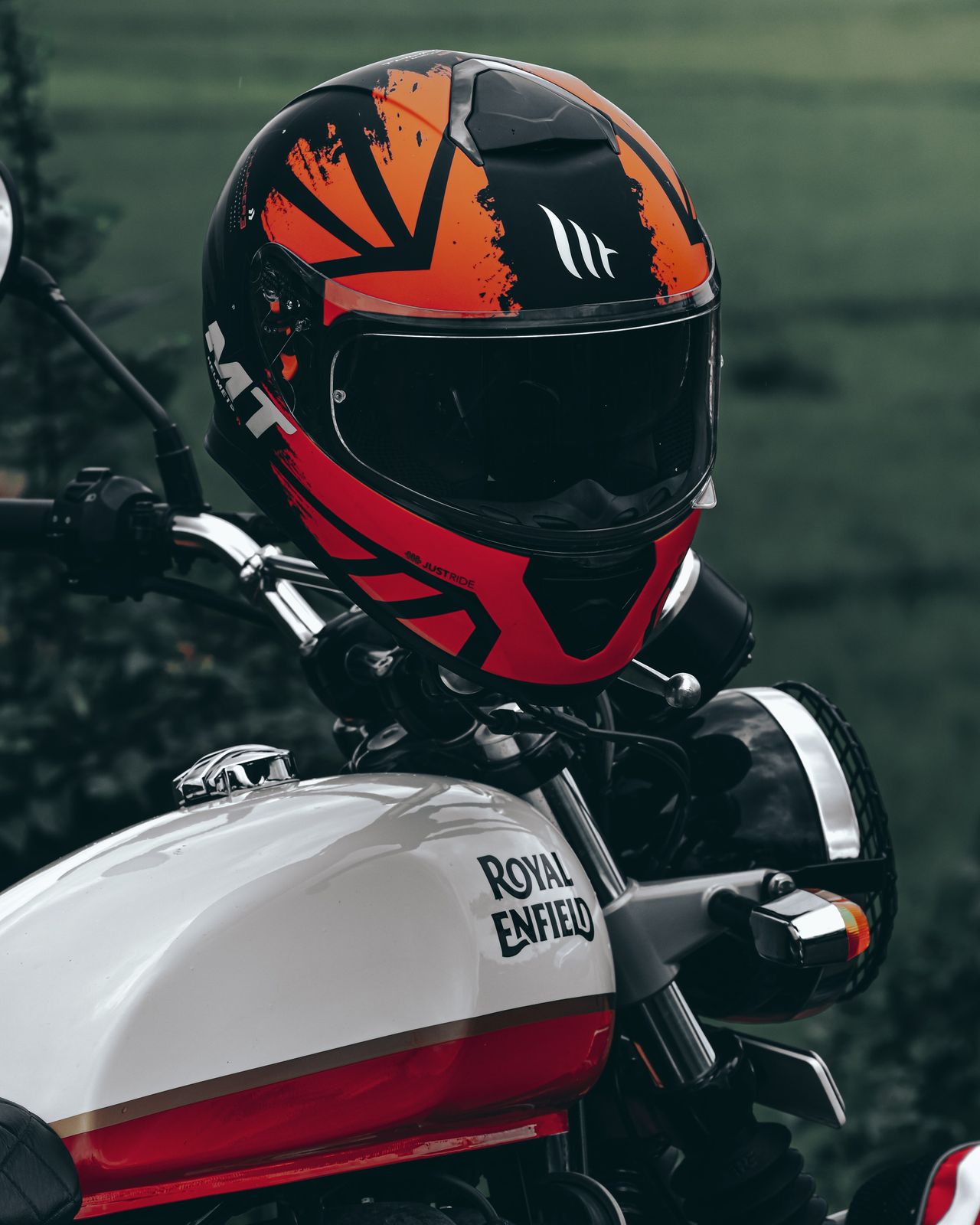8 Motorcycle Safety Tips You Need to Know

Motorcycle safety tips - The basics.
Here are the motorcycle safety tips you ought to know.
- Wear a Helmet
It ought to go without saying, but many motorcycle owners are guilty of hitting the open road without a proper helmet. As a result, we have to include this as the number one safety tips on our list: Always wear a helmet.
When we say always, we truly mean always — even if you're only going around the block. It might feel like a nuisance, but it's a nuisance that could save your life.
Remember, too, that your helmet should be a high-quality, full-face model. This will provide you with the greatest level of protection. It's always required by law in the United States.
- Wear Appropriate Clothing
In addition to wearing a helmet, it's also important to wear proper clothing and footwear when riding a motorcycle.
On the clothing front, this means wearing long pants (preferably leather), a jacket, and gloves. Covering up will protect you from debris that could come flying your way, especially when you're riding at higher speeds.
As for shoes, it's best to wear closed-toe shoes (preferably boots). This provides additional protection from exhaust pipe burns and toe strikes, especially in the event that you're in an accident.
- Obey the Law
No matter how irritating they may seem at times, the laws are in place to keep us safe. That includes road laws for drivers and motorcyclists.
When you're out riding, be aware of the laws and follow them.
This is especially true when it comes to sticking to the speed limit. The faster you drive, the harder it is for you to stop. This, in turn, makes you more vulnerable to accidents and puts other drivers at risk who might be trying to get out of your way.
- Be a Defensive Rider
You've heard of defensive driving, but defensive riding is also an important skill to master.
Being a defensive rider means not assuming that other drivers see you. You should ride with your headlights on and stay out of drivers' blind spots.
It's important to use your signal before changing directions and keep an eye out for vehicles that might be turning as well.
Practicing defensive riding helps to keep you safe and makes the road a safer place for everyone else, too.
- Be Alert and Sober
Do not ride your motorcycle when you're tired, and never get on it after you've been drinking. If you're too tired or are inebriated, you won't have the kind of reaction times you need to be a safe, defensive rider. You'll be putting yourself at risk as well as everyone else who's on the road.
It doesn't matter how badly you want to get home or how much of a hurry you're in. It's not worth risking your life and other people's lives. Wait until you're in a better state.
- Check Your Motorcycle
Be sure to check your motorcycle on a regular basis. If you're driving around on a damaged bike, you're going to be more prone to accidents (not to mention the fact that you'll likely make the problems with your bike worse).
Some basic things you ought to check include the following:
- Tire wear and pressure
- Headlight, taillight, and turn signal function
- Hydraulic and coolant fluid levels
- Clutch and throttle function
- Mirror cleanliness
- Brake function
- Horn function
Check under the motorcycle for signs of oil leaks, too.
- Check Yourself
In the same way that you shouldn't drive when you're in a negative emotional state, you also shouldn't get on a motorcycle.
Do a quick check before you decide to go for a ride. If you're feeling angry, anxious, or distracted in any other way, take some time to calm down and get into a better headspace. This will help you stay alert while driving and avoid potential accidents or dangerous situations.
- Be Visible
As a motorcyclist, you're automatically at a disadvantage when you're out riding. It's harder for people in cars to see you, even if they are paying attention. Because of this, it's important for you to make yourself extra visible.
Installing a motorcycle headlight modulator helps drivers to see you more clearly, especially when you're driving at night. This attachment is like a strobe light that is more likely to get a driver's attention than your motorcycle headlight alone.
What to Do if You Get in a Motorcycle Collision
In the event of an accident you will be confused and emotional, so stay calm and follow a few steps:
- Take down the information of the drive or other party
- Call emergency services and seek medical care, even if your injuries seem minor
- File a police report right away
- Take photos of the scene
- Write down everything you can remember related to the situation that led to the accident
- Save everything associated with your accident (medical records, photos of your motorcycle, etc.) to help with the process of filing an insurance claim
You must be logged in to comment
Login now